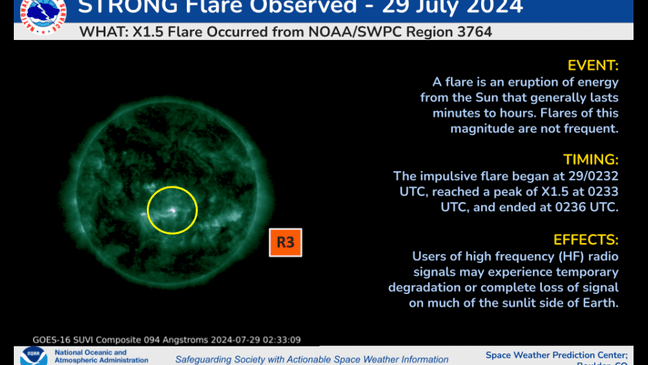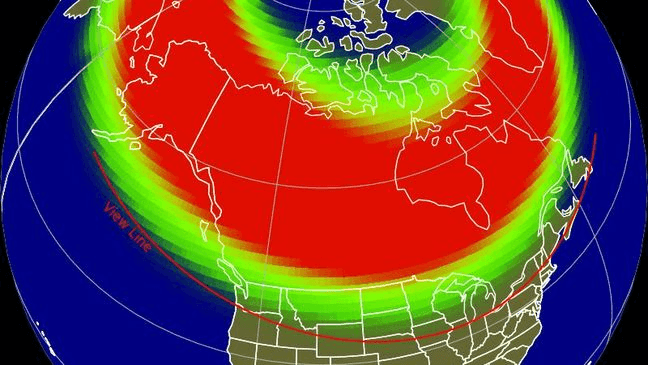Geomagnetic Storm Watch issued through Thursday, auroras possible for some in US
NASHVILLE, Tenn. (WZTV) — NASA's Space Weather Prediction Center (SWPC) has issued a Geomagnetic Storm Watch Tuesday through Thursday as solar activity ramps up on the sun.
NASA reports a number of Coronal Mass Ejections (CME) are directed at Earth, with the arrival of the ejections projected to start Tuesday into Thursday. As a result, if the ejections arrive late at night, an aurora could become visible as far south as the northeast U.S. through the upper Midwest and across the country's northern states.
Flares are expected to range from minor to moderate with a slight chance of strong activity. The scale for geomagnetic storms goes from G1 (Minor) to G5 (Extreme). SWPC states each of the scale levels can result in impacts for Earth. G1 storms can cause power grid fluctuations, G2 can affect power systems, G3 can trigger false alarms on some protection devices and need voltage corrections as well as affect satellite navigation. G4 includes the potential for widespread voltage problems, satellite navigation and an aurora as far south as Alabama and northern California. G5 would lead to potential complete blackouts and transformer damage with auroras seen as far south as Florida and southern Texas.
The solar activity is part of the Sun's magnetic pole flip which takes place every 11 years. The solar cycle, which started in 2019, has been projected to peak sometime this year or next (near middle of the 11 year cycle). According to experts at San Diego State University, right as the polarity is about to flip, there are strong increases in solar activity such as sunspots, flares, and coronal mass ejections such as the ones currently taking place. Following this peak, solar activity eases to what is called the solar minimum.
Get reports like this and all the news of the day in Middle Tennessee delivered to your inbox each morning with the FOX 17 News Daily Newsletter.


